Photo
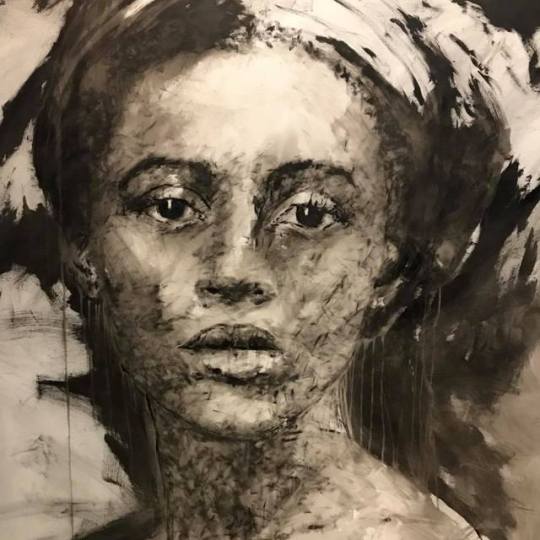
ONTVLUGTING (ESCAPISM) – ’n UITSTALLING VAN MARIA VIKTOR
18:00 op 20 Augustus 2018 by Brooklyn Teater
Volgens Maria Viktor is die strand ’n metafoor vir ontvlugting uit die werklikheid, alledaagsheid en kwellings. Of hierdie uitstappie net in die gedagtes in dagdrome of werklik plaasvind, bly die strand die plek van vergenoegdheid waar alle sorge weggespoel word en suiwer son- en spirituele opwekking plaasvind.
Hierdie uitstalling is die Wes-Kaapse kunstenaar Maria Victor se derde solo-uitstalling. Sy skilder al vier jaar lank en is hartlik deur die Suid-Afrikaanse kunsmark ontvang. Haar uitstallings in Johannesburg en Kaapstad was beide byna uitverkoop.
Uitstalling is vanaf 20 Augustus tot 22 September
0 notes
Video
youtube
Mozart's Requiem in D minor, K. 626 (Four-hand Piano version by Carl Cze...
0 notes
Photo

#gautengphilharmonic Skater's Waltz, Carmen March & more & Young Person's Guide to the Orchestra. Sat 24 Mar 19:00 - Sun 25 Mar 15:00 www.brooklyntheatre.co.za 012-460-6033
0 notes
Text
Piano Cello Recital Bryan Wallick and Peter Martens
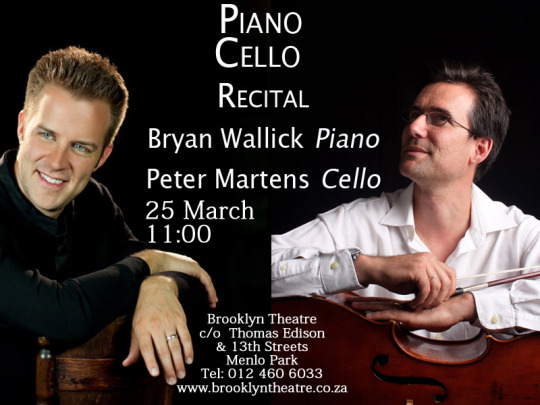
Sunday 25 March 11:00
Internationally acclaimed local cellist, Peter Martens, teams up with renowned American pianist, Bryan Wallick, in a recital of varied repertoire. Martens will open with the fourth suite for solo cello by Bach before being joined by Wallick in the beautiful romantic sonatas for cello and piano by Brahms and Rachmaninoff.
Program:
Bach Solo Cello Suite No. 4 in E-flat
Brahms Cello Sonata No. 1 in e-minor Op. 38
Interval
Rachmaninoff Cello Sonata in g-minor Op. 19
Ticket sales:
Sunday, 25 March 11:00
Block A (Adult) - R160 Block B (Adult) - R140
Block A (Senior) - R140 Block B (Senior)- R120
Children/Students/Scholars pay R120
BOOK NOW
Brooklyn Theatre (012 460 6033)
Greenlyn Village Centre
C/o Thomas Edison and 13th Streets
Menlo Park, Gauteng, South Africa
Bryan Wallick Biography:
Bryan Wallick is gaining recognition as one of the great American virtuoso pianists of his generation. Gold medalist of the 1997 Vladimir Horowitz Piano Competition in Kiev, he has performed throughout the United States, Europe, and South Africa.
Dr. Wallick made his New York, New York recital debut in 1998 at Weill Recital Hall at Carnegie Hall and made his Wigmore Hall recital debut in London, United Kingdom in 2003. He has also performed at QueenElizabeth Hall with the London Sinfonietta and at the St. Martin-in-the-Fields Church with the London Soloist’s Chamber Orchestra.
In recent seasons, Dr. Wallick has performed with the Arizona Musicfest Orchestra, Boise Philharmonic, Brevard Symphony, Cape Town Philharmonic, Cincinnati Pops, Evansville Philharmonic, Illinois Philharmonic, Johannesburg Philharmonic, Kentucky Symphony, Kwa-Zulu Natal Philharmonic, Phoenix Symphony, Portland Symphony, and the Winston-Salem Symphony; and collaborated with Erich Kunzel, Marvin Hamlisch, Robert Moody, conductor, Daniel Boico, Arjan Tien-Du Toit, Yasuo Shinozaki, Andrew Sewell, Vladimir Verbitsky, Victor Yampolsky, Josep Vicent, Leslie Dunner, Alfred Savia, Christopher Confessore, and Carmon Deleon among others. Dr. Wallick has performed recitals at the Chateau Differdange in Luxembourg, on the Tivoli Artists Series in Copenhagen, Ravina's Rising Star Series, Xavier Piano Series (Cincinnati), Scottsdale Center’s Steinway Series, Sanibel Island Music Festival, and the Classics in the Atrium Series in the British Virgin Islands. In March 2002, Dr. Wallick played two solo performances at Ledreborg Palace for HRH Princess Marie Gabrielle Luxembourg, and HRH Prince Philip Bourbon de Parme.
Bryan Wallick is also deeply committed to chamber music and has performed on tours with violinists Yi-Jia Susanne Hou, Miriam Contzen, Sergei Malov, Zanta Hofmeyr and cellists Wolfgang Emmanuel Schmidt, Peter Martens and Anzél Gerber. He has recently taken over as the Artistic Director of Schalk Visser/Bryan Wallick Concert Promotions which hosts many international musicians who perform concert tours throughout South Africa. Dr. Wallick has also been invited in the summer of 2018 to be on the guest faculty of the largest music festival in Italy, MusicFest Perugia.
Bryan Wallick’s 2015-16 highlights included return engagements with the Cape Town Philharmonic, Kwa-zulu Natal Philharmonic, Pretoria Symphony Orchestra, the Rand Symphony Orchestra, and he also performed solo and chamber recitals throughout South Africa with violinist Rachel Lee Priday, violinist Sergei Malov, cellist Peter Martens and soprano Hanli Stapela. His 2016-17 engagements include a return recital at the Ravinia Festival in Chicago, solo recitals at the Rising Star Series in South Hampton, New York, the Fitton Center in Ohio, the Grand Piano Series in Naples, Florida, Musicfest Perugia in Italy, and throughout South Africa and Zimbabwe. He will also collaborate with cellist Zuill Bailey on a South African tour.
Dr. Wallick has performed on National Ukrainian Television and Radio, on Danish National Radio, on Chicago’s WFMT Fazioli Series, on BBC's radio show "In Tune," and on NPR's "Performance Today." He was recently given a grant by the Scottsdale Center for the Performing Arts to explore his synesthetic realities in a multimedia project that allows the audience to see the colors he experiences while performing. Synesthesia is the ability to experience two or more sensory experiences with one stimulus. Bryan Wallick sees colors with each musical pitch and has created a computer program that projects images of his colored visions to the audience.
Dr. Wallick studied with Jerome Lowenthal in New York City where he was the first Juilliard School graduate to receive both an undergraduate Honors Diploma (2000) and an accelerated Master's Degree (2001). He continued his studies with Christopher Elton in London at the Royal Academy of Music where he was the recipient of the Associated Board International Scholarship, receiving a Post-graduate Diploma with Distinction, and previously studied with Eugene and Elizabeth Pridonoff at the Cincinnati College Conservatory of Music. Dr. Wallick is currently a part-time faculty member at the University of Pretoria where he received his Doctorate in 2013. George Plimpton's feature article on Bryan Wallick appears in the March 2002 edition of Contents magazine.
Peter Martens Biography
South African cellist, Peter Martens, and Portuguese pianist, Luis Magalhães, won the 2011 Classical Music SAMA for their recording of the complete Sonatas for Cello and Piano by Beethoven. Joanne Talbot of the Strad Magazine wrote, “Martens delivers brilliantly incisive and spirited accounts of all these works.”
Of his CD of the Bach Cello Suites, Robin Stowell, of the Strad Magazine wrote, “Peter Martens’s interpretations are thoughtfully prepared and generally commendably executed, balancing modern performance practices with the simple clarity of period style. […] Martens brings aristocratic poise, poetry and rhythmic flexibility to the preludes. […] His courantes are generally fast and light and his sarabandes are profound and freely contemplative. […] Martens is playful in the gallantries, giving spring to the pairs of menuets in nos. 1 and 2, playing the bourées in mischievous vein […] and injecting the gavottes with a sense of fun.”
Peter Martens studied with Dalena Roux at Stellenbosch University and Heidi Litschauer at the Mozarteum in Salzburg. He holds a Masters Degree from the University of Cape Town (A Practical Guide to the performance of the Bach cello six suites on a modern instrument) and a PhD from Stellenbosch University (Contemporary performance of Beethoven’s cello sonatas with special reference to Carl Czerny). In 1993 Peter returned to South Africa and occupied principal positions in the New Arts Philharmonic and Cape Philharmonic before moving to the University of Stellenbosch where he currently holds the position of Director of the Stellenbosch International Chamber Music Festival.
He is a member of the Amici String Quartet and has enjoyed other chamber music partnerships with Leon Bosch (double bass), Lamar Crowson (piano), David Juritz (violin), Nina Schumann (piano), Luis Magalhães (piano), Benjamin Schmid (violin), Daniel Rowland (violin), Wolfgang Schmidt (cello), Mirijam Contzen (violin), Suzanne Martens (violin), Ivry Gitlis (violin) and members of the Osiris Piano Trio, Amsterdam. Recent concert activity has included the Schubert Quintet with the Brodsky String Quartet in London; several performances of the Gulda Cello Concerto; various chamber music performances with pianist, Leslie Howard; several performances of the six Bach Cello Suites; a performance of a C.P.E. Bach cello concerto with the Orfeo Chamber Orchestra in Antwerp and a performance of the Beethoven cello sonatas for the Salzburger Schloßkonzerte with pianist Ariane Haering. Concerto engagements have resulted in collaborations with a number of fine conductors including Victor Yampolsky, Bernard Gueller, Douglas Boyd, Nicholas Cleobury, Wolfram Christ and Jonas Alber. He has participated in festivals in Russia, Holland, Salzburg, Zimbabwe, Mozambique and Portugal as well has having performed in the U.K., U.S.A. and Belgium. Many South African composers have written for him, the most notable composition being the Cello Concerto by Allan Stephenson, which he recorded for Meridian Records with the Cape Philharmonic. He has subsequently given the world premiere of Peter Klatzow’s sonata for cello and piano both in South Africa and in Cambridge. His CD of the Bach Cello Suites, available from TwoPianists Records was launched in March 2013 with a three-hour recital including all six suites, streamed live from the Endler Hall Stellenbosch.
Peter is now Artistic Director of the award winning Stellenbosch University Camerata that teamed up with Joshua Bell in performances of Vivaldi’s (2012) and Piazzolla’s (2015) Four Seasons in Stellenbosch. In February 2016, together with the SU Camerata, he has performed and directed the Beethoven ‘Triple’ concerto together with Priya Mitchell (violin) and Dirk Mommertz (piano). With Suzanne Martens, he and the SU Camerata have given several performances of Mozart’s Sinfonia Concertante KV 364 for which his own transcription for cello of the solo viola part is available from Stellenbosch University Press. In August 2014 the US Camerata accompanied and played under the baton of Pinchas Zukerman to great critical acclaim. Under Peter’s baton, the SU Camerata has recorded a number of feature film scores for award winning movies such as Khumba and Wonderwerker.
Peter ordinarily plays on a Lockey Hill cello, but inspired by the Historically Informed Performance Practice movement, acquired a Baroque cello in 2013. Thus far, he has performed on Baroque cello with the University of Stellenbosch Baroque Ensemble under the direction of Pauline Nobes, Camerata Tinta Barocca and with L’Orfeo Baroque in celebrating Dr. Barry Smith’s 50 years of music making in Cape Town. He is married with two children to violinist, Suzanne Martens.
0 notes
Text
Piano Cello Recital BRYAN WALLICK PETER MARTENS
Sunday 25 March 11:00
Internationally acclaimed local cellist, Peter Martens, teams up with renowned American pianist, Bryan Wallick, in a recital of varied repertoire. Martens will open with the fourth suite for solo cello by Bach before being joined by Wallick in the beautiful romantic sonatas for cello and piano by Brahms and Rachmaninoff.

Program:
Bach Solo Cello Suite No. 4 in E-flat
Brahms Cello Sonata No. 1 in e-minor Op. 38
Interval
Rachmaninoff Cello Sonata in g-minor Op. 19
Ticket sales:
Sunday, 25 March 11:00
Block A (Adult) - R160 Block B (Adult) - R140
Block A (Senior) - R140 Block B (Senior)- R120
Children/Students/Scholars pay R120
BOOK NOW
Brooklyn Theatre (012 460 6033)
Greenlyn Village Centre
C/o Thomas Edison and 13th Streets
Menlo Park
0 notes
Photo
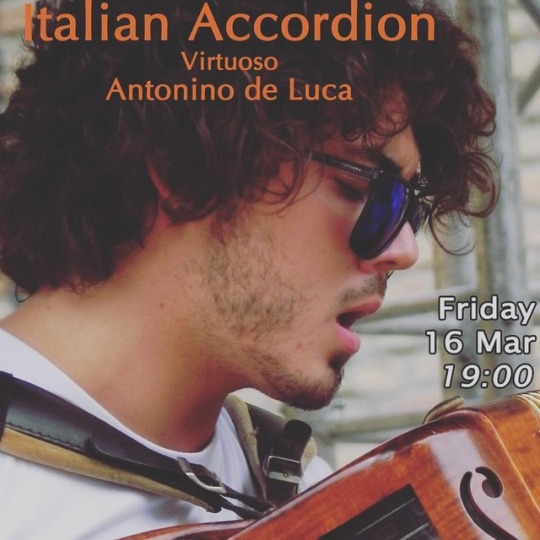
ITALIAN ACCORDION VIRUOSO - ANTONINO DE LUCA Friday, 16 March 19:00 One of the new Italian stars of accordion. Program title: CONFINI Music by E. Morricone, A. Piazzolla, E. Gismonti, H. Pascoal, A. De Luca BOOK NOW Born and raised in Sicily, I began to play the accordion thanks to the dumbness and passion of my father who was my first teacher; his lessons brought me to play in some Sicilian folk groups with whom I also played in France and Russia. Then I started playing the clarinet with master Antonino Linci Gugliotta, with whom I also learned the first rules of improvisation, playing also in the Band of my town: Fiumedinisi. In 2006 I met the great master Renzo Tomassetti, teacher of the famous accordionist Luciano Biondini and manager of one of the most important accordion schools in Italy; his lessons allowed me to study at a professional level and attend the Istituto Pareggiato G.B. Pergolesi of Ancona , where I graduated in “Classical Accordion I Level” with Professor Alessandro Mugnoz. At the same time, I continued the study of jazz music with the mythical Frank Marocco. I also took part at the great event "Accordion in Cruise", where I had the honor to replace him. I participated in a lot of masterclasses on jazz music with great teachers such as Luciano Biondini, Vince Abbracciante, Gabriele Mirabassi, Massimo Tagliata, Klaus Paier, Goran Alachki, Richard Galliano and Vincent Segal. @xploretshwane @brooklyntheatre @gotosouthafrica @visitgauteng @visitsouthafrica @tshwanehub @city_of_tshwane @tshwanefm (at Brooklyn Theatre)
0 notes
Text
JAN HUGO - PIANO RECITAL
Saturday 10 March 18:00
Brooklyn Theatre is proud to feature the outstanding talent of this fine pianist for the very first time. He is playing a wholesome recital programme ranging from impressionist to romantic piano works, displaying brilliant technique and sensitive musicality.
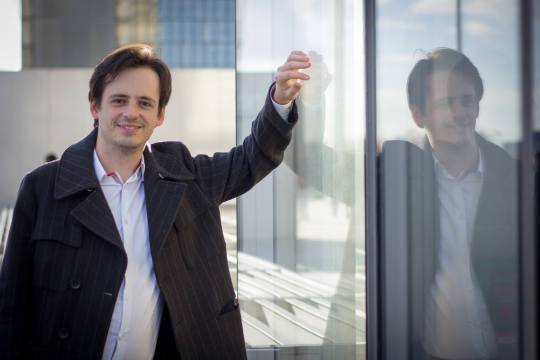
PROGRAMME
Beethoven, Ludwig vanSonata in c# minor Op. 27 n. 2 'Moonlight'
Liszt, FranzMephisto waltz no. 2
Debussy, Claudefrom
Images
- Poisson d'or
from
Estampes
- Pagodes
Chopin, FredericScherzo n. 2 Op. 31
INTERVAL
Liszt, FranzII Légendes - St. Francis of Assis
preaching to the birdsSt. Francis of Paola walking on the water
Ravel, MauriceUne Barque sure l'Océan
Scriabin, AlexanderSonata no. 5 Op. 53
Ticket sales:
Saturday, 10 March 18:00
Block A (Adult) - R160 Block B (Adult) - R140
Block A (Senior) - R140 Block B (Senior)- R120
Children/Students/Scholars pay R120
BOOK NOW
Brooklyn Theatre (012 460 6033)
Greenlyn Village Centre
C/o Thomas Edison and 13th Streets
Menlo Park
0 notes
Photo
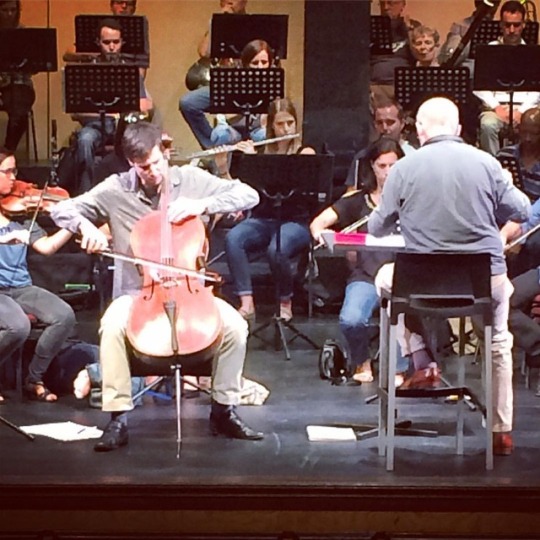
Dvorak Cello Concerto with #gautengphilharmonic Sat 3 Mar 19:00 & Sun 4 Mar 15:00 @brooklyntheatre @tshwaneclassic @xplorepretoria @xploretshwane @tshwanehub @city_of_tshwane (at City of Tshwane)
0 notes
Photo

#gautengphilharmonic Dvorak 9th Symphony & Cello Concerto @brooklyntheatre 3 Mar 19:00 & 4 Mar 15:00 @gotosouthafrica @visitgauteng @visitsouthafrica @city_of_tshwane @tshwanehub @xploretshwane @xplorepretoria @tshwaneclassic (at City of Tshwane)
0 notes
Text
THE LATEST INSIGHTS INTO CHOLESTEROL PROF. NOLA DIPPENAAR
Tuesday, 13 March 19:00
Cholesterol is found in every cell in the body, where it helps to produce cell membranes, hormones (such as estrogen, cortisol and testosterone), vitamin D, and bile acids which are the final break-down products of cholesterol. Cholesterol also plays a vital role in brain structure and function, as 25% of the body’s total cholesterol is found in the human brain.
During this talk Prof Nola Dippenaar will share the latest insights into cholesterol and the important role that cholesterol plays, and what blood tests reveal about the true picture of cholesterol in the body and your risk for heart disease.
Health is personal and there is biochemical individuality between us; however, what we bathe our genes with, through our daily lifestyle choices, will determine genetic stability and reduce the risk or further the risk of cancer development.
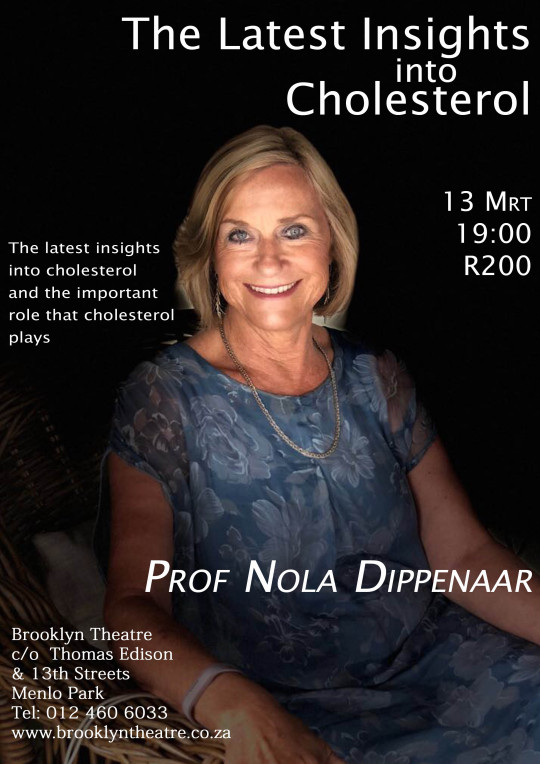
History of Health Insight:
This company (CC) was established in April 2006 by Prof Nola Dippenaar. A physiologist by training, with a good background in medical biochemistry, and after spending many years teaching these subjects at medical schools, she decided to take a leap and establish a health coaching company. Her academic background combined with an intense interest and passionate empathy, enables her to empower individuals and groups with insight and understanding into both the normal functioning of the human body, as well as when systems go awry and pathology develops.
Heath Insight has now been in operation for 5 years and has grown from strength to strength. Although originally based in Pretoria, in January 2013 an office opened in Gardens, Cape Town and regular visits are also made to Durban. Personal consultations, corporate projects and presentations form the backbone of this company. In addition, the Geneva program has been added to the menu, whereby health coaching has taken on a much more personal side: assessing individual needs and including insight into weight loss and weight management through genetic screening.
Ticket prices:
Tuesday, 13 March 19:00
R200 per person
BOOK NOW
Brooklyn Theatre (012 460 6033)
Greenlyn Village Centre
C/o Thomas Edison and 13th Streets
Menlo Park
TRANSPORT TO THEATRE
UBER
GAUTRAIN Time table for SUNDAY concerts at 15:00
DKS is an exclusive chauffeur service. Offering 24 Hour group or individual short or long distance transfers.
Tel : 0861462222 emergency : 0823076193
Email : [email protected]
www.dks.co.za
0 notes
Text
Dvorak New World Symhony 9 & Cello Concerto Gauteng Philharmonic Orchestra

CONCERTS:
Sat 3 March 19:00
Sun 4 March 15:00
Dvorak – Symphony no 9 (New World) & Cello Concerto
Czech Republic 100 years. In association with the Czech Embassy.
Czech cello soloist: Jan Pech
Czech conductor : Jan Štván
100th Anniversary of Czechoslovakia
Gauteng Philharmonic Orchestra in collaboration of Embassy of the Czech Republic.
Block A (Adult) – R310Block B (Adult) – R260
Block A (Senior) – R260Block B (Senior)- R210
Block C (Row P, Q, R) – R160
BOOK NOW
Brooklyn Theatre (012 460 6033)
Greenlyn Village Centre
C/o Thomas Edison and 13th Streets
Menlo Park

Jan Pech (Cello)
RNDr. MgA. Jan PECH, Ph. D. (*1982) is an active musician working in parallel as a scientist in the laboratory of computational fluid dynamics at the Institute od Thermomechanics of the Czech Academy of Sciences.
His musical education came from the Prague Conservatory and Academy of Performing Arts in Prague (professors R. Lojda, D. Veis, J. Hošek). He participated the masterclasses in Semmering and succeeded in the Prague Spring competition in 2012.
As a cellist, he performed several recitals and cooperated with many orchestras (Berg, South Czech Philharmony, Philharmony of the Nations, NTUSO Taipei, Prague Youth Philharmonic, Talich Chamber orch.). As a soloist accompanied by orchestra, he performed cello concertos of C. Saint-Saëns, J. Haydn, A. Kraft and repeatedly the famous B minor concerto of A. Dvořák.
Jan Pech excels in interpretation of compositions written for cello solo, which are the most often performed pieces of his repertoire, especially O. Kukal’s „Violoncelliana“, Bach’s suites or solo sonatas of Z. Kodály or P. Hindemith; he premiered the solo sonata of M. Knížák.
Besides the classical music he acts in projects of other genres. He established the Prague Cello Quartet and now leads his “PECH cello quartet”. He is a member of group Aktual.
Jan Štván (Conductor)

International master courses by Genadij Rozhdestvenski in Siena, Italy. Next year he also took IMG by Helmuth Rilling in Oregon, USA and Stuttgart, Germany. In the same time he worked as a chorus master in a National theater in Prague and then 6 years as the conductor and principal conductor in Nord Czech philharmonic in Teplice. After a few years he came back to the National Theater in Prague, where he performed operas as for instance Ottelo, Tosca or Salome. 1998 he bacame principal conductor in Opera in Pilsen where he performed many opera premieres and symphony concerts, for example Beethoven IX or Dvořák Requiem. In the same time he became a guest conductor by Nürenberger symphoniker in Germany. In between he worked in many foreign states, as guest conductor, for example in Italy, Lebanon or Switzerland. Between the years 2013-2016 he has done more than 90 concerts in France with the Moravian philharmonic Olomouc.
SYMPHONY NO. 9 IN E MINOR, OP. 95, “FROM THE NEW WORLD” by Tim Greiving

For a brief period in his early 50s, Antonín Dvořák left his home in Vysoká, Czechoslovakia – and his position as composition professor at the Prague Conservatory – to oversee the newly-founded New York National Conservatory. He came as an international celebrity, having made a name and successful body of work in Europe, and he brought his cachet to a hungry “new world” at the infancy of its high culture.
The composer’s ninth and final symphony was overtly inspired by his time in America (1892 – 1895), an attempt at harvesting our native musical seeds in the soil of his established style. (Dvořák, like Ives, wove the folk tunes of his homeland into a contemporary, symphonic tapestry.) He seized on two local kernels, that of Native Americans and of slaves, albeit loosely and colored by his Slavic sensibility. He knew Longfellow’s epic poem, The Song of Hiawatha, and was inspired by the funeral of the protagonist’s lover (Minnehaha) when he wrote his Largo, and by the dance of the Indians when writing his Scherzo. The composer never claimed any ethnomusicological accuracy in his depiction of Native Americans. In his introduction to the piece, he wrote: “I have simply written original themes embodying the peculiarities of Indian music, and using these themes as subjects, have developed them with all the resources of modern rhythms, harmony, counterpoint, and orchestral color.”
The New York Conservatory may have been the vanity project of a wealthy socialite, Jeanette Thurber, but it was actually quite socially progressive. All races and nationalities were openly welcome, and tuition was generously matched to whatever students could afford. (Dvořák encouraged his students to mine the traditions of America’s mistreated natives and slaves in their compositions, as he had done with the folk tunes of Bohemia.) One student who benefitted from the school’s unusually equal treatment was Henry Burleigh, a Pennsylvania musician and the grandson of a former slave. Burleigh worked as a copyist for Dvořák, who encouraged him to sing the African-American spirituals and plantation songs he had inherited. The spirit of that heritage found a home in the symphony’s serene second movement, and Dvořák even acknowledged the timbre of Burleigh’s voice by assigning the melody to the English horn.
The symphony was written in the spring of 1893, and premiered in New York that December, quickly becoming the composer’s most loved and most performed musical offspring. He soon returned to his home country, and many critics hear as much nostalgia for Vysoká in his “New World” as any uniquely American flavor – a bias Dvořák would likely concede.
Cello Concerto in B Minor, Op. 104
by Phillip Huscher

Dvořák began his cello concerto in New York on November 8, 1894; he completed the score on February 9, 1895 (at 11:30 A.M.), revised the ending that June, and conducted the first performance, with Leo Stern as soloist, on March 19, 1896, in London. The orchestra consists of two flutes and piccolo, two oboes, two clarinets, two bassoons, three horns, two trumpets, three trombones and tuba, timpani, triangle, and strings. Performance time is approximately forty minutes.
The Chicago Symphony Orchestra’s first subscription concert performances of Dvořák’s Cello Concerto were given at the Auditorium Theatre on January 29 and 30, 1897, with Leo Stern as soloist and Theodore Thomas conducting.
It was Victor Herbert, the composer of Babes in Toyland and Naughty Marietta, who inspired Dvořák to write the most beloved cello concerto in the repertory. We owe this historical curiosity, along with some of Dvořák’s most popular music, to Jeannette M. Thurber, the wife of a New York wholesale grocer, who exhausted her husband’s millions establishing an English-language opera company that folded and a National Conservatory of Music that flourished long enough to entice Dvořák to settle temporarily in the New World. The composer agreed to serve as director of her school for $15,000, and when he arrived in 1892, Victor Herbert was the head of the cello department. Herbert, who had come to the United States from Vienna only six years before, was highly regarded as a cellist, conductor, and composer, though he hadn’t yet written the first of the forty operettas that would make him enormously popular.
In 1892, Dvořák was as famous as any composer alive. Taking on an administrative title and a heavy teaching schedule was probably an unfortunate waste of his time and talents, although the music Dvořák wrote in this country includes some of his best: a string quartet and a string quintet (both titled American) composed in Spillville, Iowa; the New World Symphony; and this cello concerto.
For several years Dvořák had been unmoved by a request from his friend Hanuš Wihan, the cellist of the Bohemian Quartet, to write a cello concerto. During his second year at the National Conservatory, Dvořák attended the premiere of Victor Herbert’s Second Cello Concerto, given by the New York Philharmonic on March 9, 1894. It is difficult today to know why this long-forgotten score made such a deep impression on him, for Herbert was hardly an overwhelming or influential talent. But Dvořák enthusiastically applauded Herbert’s concerto, and he heard something in it that made him think, for the first time, that there was important music to be written for solo cello and orchestra. This concerto would prove to be the last major symphonic work of his career.
On April 28, 1894, Dvořák signed a new two-year contract with the conservatory. After spending the summer holiday in Bohemia, he returned to New York on November 1; a week later he began this concerto. While he was writing the second movement, he received word that his sister-in-law, Josefina Kaunitzová (with whom he had once been in love), was seriously ill. As a tribute to her, he quoted at length one of her favorite melodies, “Kéž duch můj sám” (Leave me alone), the first of his Four Songs, op. 82. He completed the concerto on February 9 (his son Otakar’s tenth birthday), at 11:30 in the morning.
After the premiere of the New World Symphony in 1893, Dvořák said, “I know that if I had not seen America I never would have written my new symphony.” The cello concerto shows no such outward signs of the composer’s American experience—it doesn’t imitate the rhythms and melodies of the native music he heard in the United States—and has often been accepted as an early warning sign of his homesickness. In fact, once Dvořák returned to Bohemia for the summer of 1895, with his new concerto in his bags, he realized that he couldn’t leave his homeland again; in August he wrote to Mrs. Thurber asking to be released from his contract. Since he had already contributed so much to American music, including a symphony as popular as any ever written, she could not refuse. The unveiling of the cello concerto, the last of Dvořák’s American products, belongs to the final chapter of his life: the premiere was given in London in March 1896, with the composer conducting. (The first American performance was not given until December.)
The literature for solo cello and orchestra isn’t extensive. At best, Dvořák can’t have known more than the single concertos by Haydn (a second was discovered in 1961) and Schumann, the first of Saint-Saëns’s two, and Tchaikovsky’s Rococo Variations for cello and orchestra. (He also knew the Triple Concerto by Beethoven and the Double Concerto by Brahms.) Dvořák had written one long-winded cello concerto in his youth and later said he thought little of the cello as a solo instrument (“High up it sounds nasal, and low down it growls”). Now, with little previous inclination and few useful models, Dvořák gave the form its finest example. Brahms is reported to have said, “Why on earth didn’t I know that one could write a cello concerto like this? Had I known, I would have written one long ago.”
The first movement of Dvořák’s Cello Concerto is as impressive as anything in the composer’s output.
The music is long and expansive. The orchestral exposition commits the textbook sin of traveling to a foreign key for the second subject—a luxury traditionally saved for the soloist—but Dvořák’s theme is so magnificent (Donald Tovey called it “one of the most beautiful passages ever written for the horn”) that it can justify the risk. Dvořák later admitted the melody meant a great deal to him. Once the soloist enters, the music grows richer and more fanciful. The development section dissolves into simple lyricism. By the recapitulation, Dvořák is writing his own rules: he bypasses his first theme and goes straight for the big horn melody, as if he couldn’t wait to hear it again. The movement is all the stronger for its daring and unconventional architecture.
Dvořák’s progress on the slow movement was sidetracked by the memory of Josefina, and, as a result, the music he wrote is interrupted midway by the poignant song she loved. The depth of his feeling for her, often debated and sometimes denied, is painfully clear. Josefina died soon after Dvořák permanently returned to Bohemia, and, hearing the news, he took this jaunty rondo finale down from the shelf and added a long, contemplative coda as a memorial. The concerto still ends in high spirits, but it’s no longer the same piece Dvořák took home from the New World.
0 notes
Photo

Mandolino Napoletano Wednesday,14 Feb 19:00 a Romantic programme of famous Neapolitan Café Music Alon Sariel (mandolin) Sergio Zampolli (accordion) Ronald Davey (cello) Laetitia Orlandi (piano) @visitgauteng @gotosouthafrica @city_of_tshwane @brooklyntheatre @xploretshwane @tshwanehub @tshwaneclassic @tshwanefm (at Brooklyn Theatre)
0 notes
Photo

Baroque live with #GautengPhilharmonic @brooklyntheatre 10 & 11 Feb. Including Vivaldi concerto Grosso. @city_of_tshwane @visitgauteng @gotosouthafrica @xploretshwane @berlanderi (at Brooklyn Theatre)
0 notes
Photo
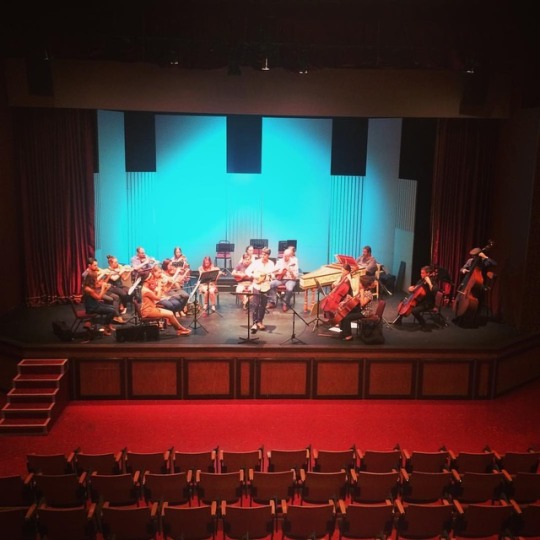
Gauteng Philharmonic Baroque Banquet with international Mandolin player and conductor, Alon Sariel 10 & 11 Feb at @brooklyntheatre @city_of_tshwane @berlanderi @visitgauteng @gotosouthafrica @xploretshwane @alonsariel (at Brooklyn Theatre)
0 notes
Photo
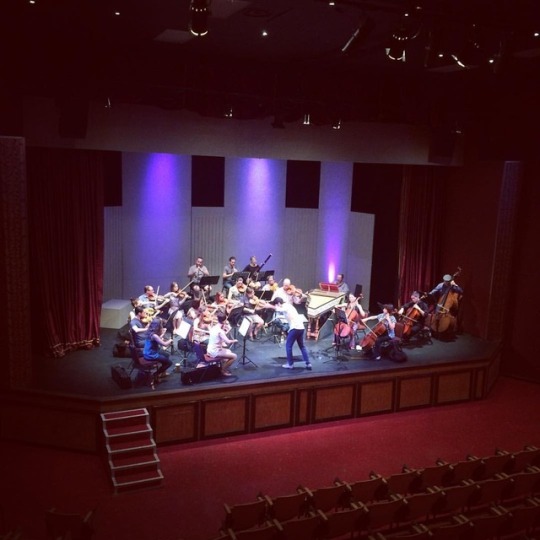
Baroque Banquet with the Gauteng Philharmonic this weekend 10 & 11 Feb in @brooklyntheatre @city_of_tshwane @visitsouthafrica @visitgauteng @gotosouthafrica @classicfeel @maroela_media @berlanderi (at Brooklyn Theatre)
0 notes
Photo

Here they are, the two pianists for tomorrow night’s Recital Four Hands all the way from Italy. Spina & Benignetti Piano Duo. They just arrive this morning and decided to attend this afternoon’s Sold Out concert of Mozart’s Magic Flute production. They are part of the Mozart Festival. Monday 29 Jan 19:00 www.brooklyntheatre.co.za 012-460-6033 @cityoftshwane @visitsouthafrica @visitgauteng @city_of_tshwane (at City of Tshwane)
0 notes
